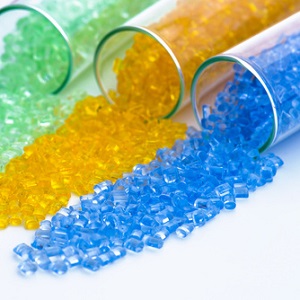
What are high-temperature polyethersulfone thermoplastics

High-temperature polyethersulfone thermoplastics represent one of the most advanced classes of engineering materials available today. Known for their exceptional mechanical, thermal, and chemical resistance, these materials are ideally suited for applications requiring durability and reliability under extreme conditions. The increasing demand for high-performance materials in industries such as aerospace, automotive, and electronics has spurred the development and adoption of polyethersulfone (PES) materials.
The primary appeal of high-temperature polyethersulfone thermoplastics lies in their ability to withstand elevated temperatures, often exceeding 200°C (392°F), while maintaining their mechanical properties and stability. This article aims to provide a comprehensive overview of polyethersulfone material, examining its definitions, properties, applications, comparisons with other high-temperature thermoplastics, advantages, challenges, and future trends.
- Definition of High-Temperature Polyethersulfone Thermoplastics
- Properties of High-Temperature Polyethersulfone
- Applications of High-Temperature Polyethersulfone
- Comparison with Other High-Temperature Thermoplastics
- Advantages of Using High-Temperature Polyethersulfone
- Challenges and Limitations
- Future Trends in High-Temperature Polyethersulfone Development
- Conclusion
Definition of High-Temperature Polyethersulfone Thermoplastics
High-temperature polyethersulfone thermoplastics, commonly referred to as PES, belong to the family of polysulfone materials. They are characterized by their unique chemical structure, which comprises repeating units of ether and sulfone groups. This combination results in outstanding thermal stability, mechanical strength, and resistance to various chemicals. PES materials are classified as thermoplastics, which means they can be melted and re-shaped upon heating, making them versatile for numerous manufacturing processes.
Chemical Structure
The chemical structure of polyethersulfone includes a backbone formed by alternating ether and sulfone linkages. The incorporation of phenyl groups within the polymer chain enhances its thermal and mechanical performance. This innovative structure allows high-temperature polyethersulfone thermoplastics to maintain their integrity and functionality even when subjected to extreme environmental conditions.
Properties of High-Temperature Polyethersulfone
High-temperature polyethersulfone thermoplastics exhibit several remarkable properties that make them valuable in various applications. These properties include:
- Thermal Stability: PES can withstand continuous service temperatures of around 180°C (356°F) and can survive short-term excursions to even higher temperatures.
- Mechanical Strength: The material exhibits excellent tensile strength and rigidity, ensuring its durability under mechanical stress.
- Chemical Resistance: PES demonstrates resistance to hydrolysis, oxidation, and a wide range of chemicals, making it suitable for harsh environments.
- Electrical Insulation: High-performance electrical insulation properties are crucial for electronic and electrical applications.
Applications of High-Temperature Polyethersulfone
Due to its advantageous properties, high-temperature polyethersulfone thermoplastics are utilized in numerous sectors, including:
- Aerospace Components: Aircraft parts often require materials that can endure harsh environmental conditions, making PES an ideal choice.
- Automotive Industry: Used in fuel systems, connectors, and other high-stress applications where heat resistance is paramount.
- Medical Devices: PES is used in the manufacturing of medical instruments that need to withstand sterilization processes.
- Industrial Applications: PES is utilized in components such as filters and membranes that require durability and stability in challenging environments.
Comparison with Other High-Temperature Thermoplastics
When compared to other high-temperature thermoplastics like polyimide, polysulfone, and polyetherketone (PEK), high-temperature polyethersulfone thermoplastics stand out in certain aspects:
- Cost: PES is generally more cost-effective compared to polyimides, making it attractive for a wider range of applications.
- Processing Ease: PES offers easier processing compared to some competing materials, reducing production time and complexity.
- Balance of Properties: PES provides a balanced combination of thermal, mechanical, and chemical resistance, positioning it favorably among similar materials.
Advantages of Using High-Temperature Polyethersulfone
The advantages of using high-temperature polyethersulfone thermoplastics extend beyond mere performance attributes. They include:
- Versatility: Suitable for multiple manufacturing techniques including injection molding, extrusion, and 3D printing.
- Long-term Stability: Retains mechanical and thermal properties over extended periods, even under frequent cycling between extreme temperatures.
- Environmental Resistance: PES materials are resistant to UV light, moisture, and various chemicals, making them suitable for outdoor applications.
Challenges and Limitations
While high-temperature polyethersulfone thermoplastics offer numerous benefits, several challenges and limitations need to be addressed:
- Processing Conditions: The processing temperatures of PES are relatively high, which can pose challenges for some manufacturers.
- Moisture Absorption: This material can absorb moisture, which may affect its dimensional stability and properties after water exposure.
- Availability of Material Grades: Although PES is produced in various grades, some specific property requirements may not be met by available commercial options.
Future Trends in High-Temperature Polyethersulfone Development
The future of high-temperature polyethersulfone thermoplastics is promising, with advancements being made in various research and development areas. Some trends include:
- Enhanced Performance: Ongoing research aimed at creating PES composites with improved properties to meet the ever-increasing demands of high-performance applications.
- Sustainability: Developing recycling strategies and bio-based alternatives to enhance the eco-friendliness of PES production and usage.
- Smart Materials: Integrating functionalities such as self-sensing or self-repairing capabilities to create 'smart' polyethersulfone materials.
Conclusion
In conclusion, high-temperature polyethersulfone thermoplastics exhibit a unique combination of properties that make them indispensable in various high-performance applications. From their remarkable thermal stability and mechanical strength to their versatility in processing, these materials are paving the way for innovation across multiple industries. As advancements continue in the fields of material science and engineering, the development of polyethersulfone materials will undoubtedly evolve, leading to even more exciting applications in the future.
Understanding the properties, applications, and future prospects of high-temperature polyethersulfone thermoplastics can help industries leverage their performance benefits, addressing the demands of modern engineering challenges effectively.
Did you find this article helpful? What are high-temperature polyethersulfone thermoplastics See more here General.
Leave a Reply





Related posts